This Creative Development Which Was Responsible For The Survival Of The Cotton Industry In The United States Occurred In General Nathaniel Greene's Plantation Near Savannah 10 Miles Northeast Of This Marker. Separation By Hand Labor Of The Lint From The Seed Of The Desired Upland Variety Of Cotton Produced Only One Pound Per Day Per Person. Eli Whitney, A Native Of Massachusetts And Yale Law Graduate, Came To Georgia To Teach School In Late 1792, At Age 27. Mrs. Catherine Greene, Widow Of General Greene, Invited Whitney To Her Plantation, And Urged Him To Design A Cotton Gin.
1750-1799


On 4 June 1783, Joseph Michel and Jacques Etienne Montgolfier captured the imagination of the world with their first balloon flight at Cordeliers Square. There were no passengers, but the Regional Council and the whole town population saw the machine go up and stay aloft at 500 meters for ten minutes. The scientific world raced to make use of the Montgolfiers’ discovery, and all accomplishments made since then by aeronauts, aviators, and astronauts can be traced directly to this site.
We have all been taught to be critical of the written word, but we tend to let the omnipresent graphics of our era pass without close scrutiny. This we do at our own loss and peril. Graphics are rich stores of information, but often they lie about quantitative information and are unnerving and confusing when they could be aesthetically pleasing. In his recent book, The Visual Display of Quantitative Information, Edward R. Tufte tells us what we should treasure, reject, and censor in graphics—and much more.

The "Land Ordinance of 1785" required that U.S. lands in the public domain be surveyed before sale, and that the surveys be made in accordance with a consistent, integrated system of lines grid-oriented to a true meridian (north-south reference line) and base line (east-west reference line), subdividing the land into approximately square parcels, called townships.
Thomas Hutchins, the first Geographer of the United States, drove his stake near East Liverpool, Ohio to mark the Point of Beginning of the Geographer's Line, the first westward base line.
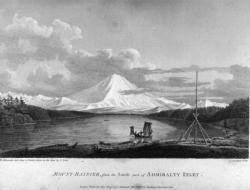
The voyage of Captain George Vancouver, 1791 -1795, was commissioned by the British Admiralty to map in detail the west coast of North America from Mexico to Alaska and to meet with Spanish authorities on the coast to enforce the terms of the Nootka Sound Convention of 1790.
This bridge is recognized as the first iron bridge in the world. This rural region of England was an important industrial area thanks to coal deposits near the surface. In 1776 the nearest bridge that enabled people and goods to pass over the River Severn was two miles away at Buildwas. There was a ferry crossing, but the trip was difficult and dangerous especially in winter. In 1776, an Act to build a bridge to remedy this situation received Royal Assent.
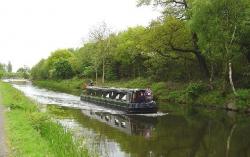
It took 22 years to complete the 35-mile waterway, as funding problems caused the work to shut down from 1777 to 1785.
The notion of creating a canal that crossed Scotland was conceived in the 17th century during the reign of Charles II, but would not be realized for nearly 100 years. The Forth and Clyde Canal, known as The Great Canal in its early years, was the first major transportation project in Scotland and the world's first man-made, sea-to-sea ship canal.

The United States Capitol is among the most symbolically important and architecturally impressive buildings in the nation. Construction of the original Capitol began in 1793, but it has been through several additions and alterations. Over its lifetime, the Capitol building has been built, burnt, rebuilt, extended, and restored.
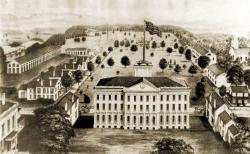
George Washington's concern over standardization of rifles for the Continental Army led to the formation of national armory and to his selection of Springfield as its site. Completed in 1794, it was the first national armory in the United States. Like the Robbins and Lawrence Armory, the Springfield Armory was an outstanding machining center for the design and mass production, employing notable engineers such as Thomas Blanchard (1788-1864), Thomas Warner, and Cyrus Buckland.

Sewall's Bridge is a singular example of an era when wooden trestle bridges carried highway traffic across New England waterways. It is the earliest pile-trestle bridge for which an authentic construction record exists, and the oldest for which builder's drawings survive. Spanning the York River, it was named for Major Samuel Sewall, Jr., the civil engineer who designed and constructed it.
Innovations
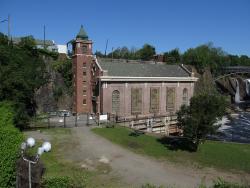
Visionary Alexander Hamilton, the United States' first Secretary of the Treasury, visited the Great Falls of the Passaic River with George Washington in 1778. The 77-foot-high, 280-foot-wide waterfall inspired his dream of abundant, inexpensive energy as the means for economic independence from…
Read More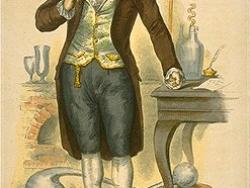
Antoine-Laurent Lavoisier studied at the Académie des Sciences de l'Institut de France (then "Collège Mazarin") from 1754 to 1761. He was elected to the Royal Academy of Sciences in 1768, where he presented his important studies on oxygen in chemistry. These began with a "pli cacheté" of Nov. 2…
Read More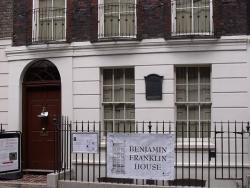
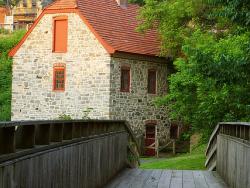
The first known pumping system providing drinking and wash water in the North American colonies. The building (still standing) is dated 1761, but it was preceded by an experimental frame building dated 1754. Before the Bethlehem built its system, assigned carriers would daily haul water up the…
Read More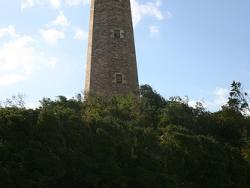
The Old Cape Henry Light house was the first construction project authorized by the First Congress. Constructed by John McComb, Jr. of New York City, this project set the stage for all subsequent public works projects of the Federal Government. In addition, this specific lighthouse was a vital…
Read More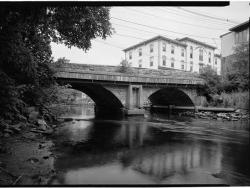
The Choate Bridge of Essex County, completed in 1764, is the oldest documented two-span masonry arch bridge in the United States. Named after Colonel John Choate, who supervised the construction, the bridge is located on South Main Street and spans the Ipswich River. Originally, the bridge…
Read More
The stone was set by the joint U.S.-Spanish survey party on April 10, 1799. Made of sandstone, it is roughly two feet high and eight inches thick. On the north side of the stone is the inscription "U.S. Lat. 31, 1799." On the south side is "Dominio de S.M. Carlos IV, Lat. 31, 1799."
…
Read More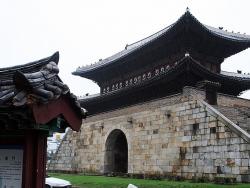
Built between 1794 and 1796 by the 22nd King of the Joseon Dynasty, Jeongio, this fortress is an outstanding example of early modern defensive works. Principally designed by Jeong Yak-Yong, it incorporated the most highly developed features of science and engineering from both the east and west…
Read More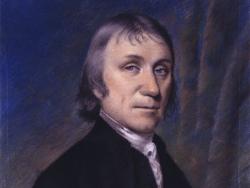
When Joseph Priestley discovered oxygen in 1774, he answered age-old questions of why and how things burn. An Englishman by birth, Priestley was deeply involved in politics and religion, as well as science. When his vocal support for the American and French revolutions made remaining in his…
Read More
When Governor James Grant arrived in the newly acquired British colony of East Florida in 1764, he found it devoid of settlers. To increase both the population and commerce with the 13 colonies to the north, he commanded that a road be built from his provincial capital of St. Augustine to Ft.…
Read More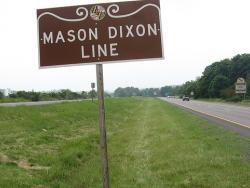
The granite milestones marking the Mason-Dixon Line bear crests from the two parties involved in the land-grant dispute, the families of William Penn and Charles Calvert (also known as Lord Baltimore).
What is now generally referred to as the Mason-Dixon Line was established by the…
Read More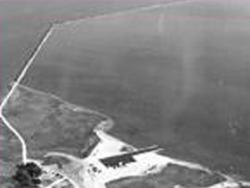
In 1794, the Delaware legislature authorized a lottery to fund the erection of ice piers in the harbor at New Castle. The ice harbor was designed to protect anchored ships from storms and ice. At the time, New Castle served as the principal winter port for ships from the Port of Philadelphia…
Read More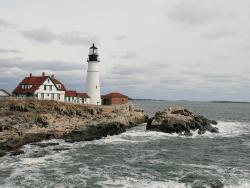
The Portland Head Light was the first lighthouse to be constructed in Maine and the first one completed and put into service by the Federal government under the Lighthouse Act of 1789, which moved to place all lighthouses under federal control. While work had begun on the lighthouse in 1787 by…
Read More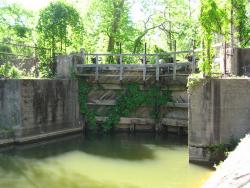
These canals and locks are a part of the first extensive system of canal and river navigation works undertaken in the United States. The idea for the canal was proposed by George Washington, when, as an engineer, surveyor and military emissary for Virginia, he saw the need for a trade route west…
Read More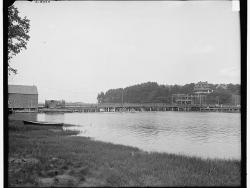
Sewall's Bridge is a singular example of an era when wooden trestle bridges carried highway traffic across New England waterways. It is the earliest pile-trestle bridge for which an authentic construction record exists, and the oldest for which builder's drawings survive. Spanning the York River…
Read More
George Washington's concern over standardization of rifles for the Continental Army led to the formation of national armory and to his selection of Springfield as its site. Completed in 1794, it was the first national armory in the United States. Like the Robbins and Lawrence Armory, the…
Read More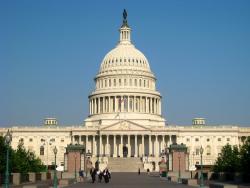
The United States Capitol is among the most symbolically important and architecturally impressive buildings in the nation. Construction of the original Capitol began in 1793, but it has been through several additions and alterations. Over its lifetime, the Capitol building has been built, burnt…
Read More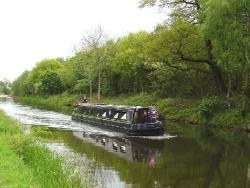
It took 22 years to complete the 35-mile waterway, as funding problems caused the work to shut down from 1777 to 1785.
The notion of creating a canal that crossed Scotland was conceived in the 17th century during the reign of Charles II, but would not be realized for nearly 100…
This bridge is recognized as the first iron bridge in the world. This rural region of England was an important industrial area thanks to coal deposits near the surface. In 1776 the nearest bridge that enabled people and goods to pass over the River Severn was two miles away at Buildwas. There…
Read More

